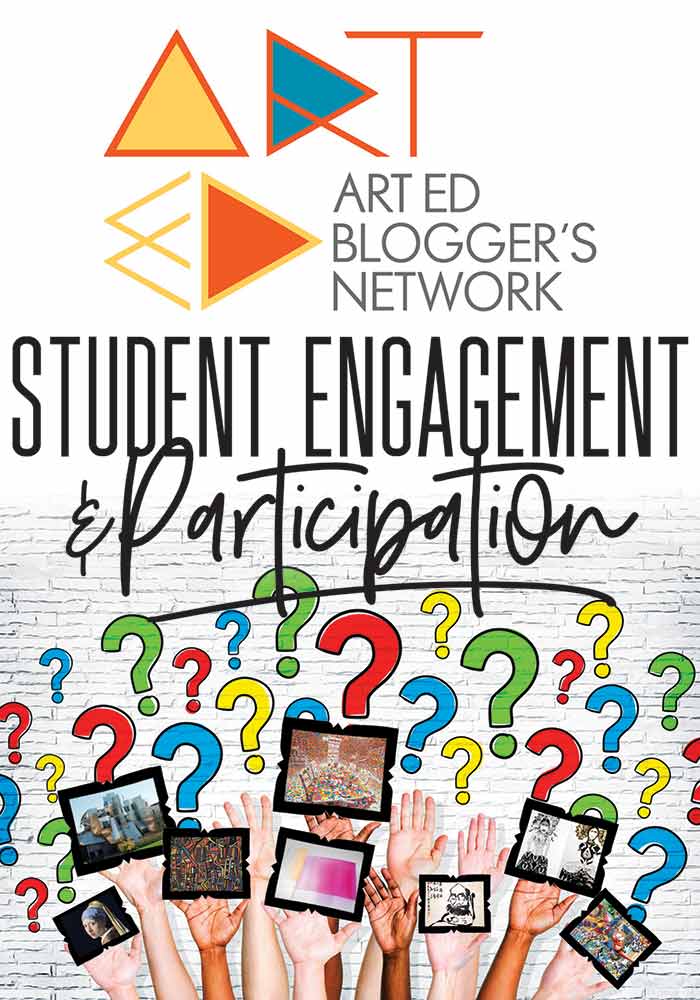It is time for this month's Art Ed Blogger's Network post!
This month's topic is Student Engagement and Participation.
Here's the thing. I think students are engaged when you give them stuff to do that excites them, that they don't get to do every day, where they have significant personal input in their final product, and where they will be proud of their final product. So often, I see former students, many years after they've graduated from high school, and then tell me they still have the papier-mache project they made in 3rd grade, or 5th grade, perhaps. That's when I feel like I've done something right!
Especially when they are given lots of personal choice. For example, for these 5th grade cats pictured above, the basic structures were all built the same way, but the particular way each cat was posed, and how they were painted and embellished, make them uniquely original.
Same thing with these 3rd grade tikis above. The basic structure began with a tennis ball container, but then each became totally original as the features were added, and and embellishments were added.
But papier-mache is not the only way to engage kids. Any time we do a project that involves rummaging through trays and boxes of 'stuff', I find the kids get very enthused. I find students especially love the opportunity to create collages that use a lot of random textural objects. Above, are two first grade pieces, based on the story of the Princess and the Pea. Can you find the pea hiding under each mattress? Below, and at the top of this post, 2nd graders created wild beasts using assorted collage materials.
In the school where I taught, the 6th graders were sort of balanced precariously between elementary and middle school, but still came to elementary for art. They didn't want to feel like babies, and therefore could be harder to engage than the always-enthusiastic little kids. My method to keep them engaged was to give them tools and materials they didn't use when they were younger, and challenge them with long-term projects with basic parameters but also a lot of personal choice. Here's some examples: First, a cartouche design carved out of Sheetrock. Next, two examples from 6th grade altered books.
Below are two examples from a "people in motion" plaster bandage project.
And below, a plate design based on the story of Blue Willow dishes. Rather than having students decorate paper plates, likely to be discarded after they were done, I bought a selection of white plates at yard sales and flea markets. It didn't cost much, and everyone was proud to take home their plates when they were complete!When you set your parameters for a project, don't forget that your students will be more engaged, and therefore less inclined to disruptive behavior, if they have been allowed to make some decisions about their finally product and thus are more personally invested.
This post is a part of The Art Ed Blogger's Network: Monthly Tips and Inspiration from Art Teacher Blogs. On the first Tuesday each month, each of these art teacher blogs will post their best ideas on the same topic.
Participating Art Teacher Blogs:
- Art Class Curator
- Art Ed Guru
- Art is Basic
- Art Room Blog
- Art Teacher Tales
- Art with Mr. E
- Arte a Scuola
- Artful Artsy Amy
- Capitol of Creativity
- Create Art with ME
- MiniMatisse
- Mona Lisa Lives Here
- Mr. Calvert's Art Room Happenings
- Mrs. Boudreaux's Amazing Art Room
- Mrs. T's Art Room
- Ms. Nasser’s Art Studio
- Party in the Art Room
- shine brite zamorano
- Tales from the Traveling Art Teacher
- There's a Dragon in my Art Room






















No comments:
Post a Comment
Due to spam/phishing overload, comments are no longer being accepted on this blog. You can find There's a Dragon in my Art Room on Instagram if you wish to react to this blog or contact me.
Note: Only a member of this blog may post a comment.